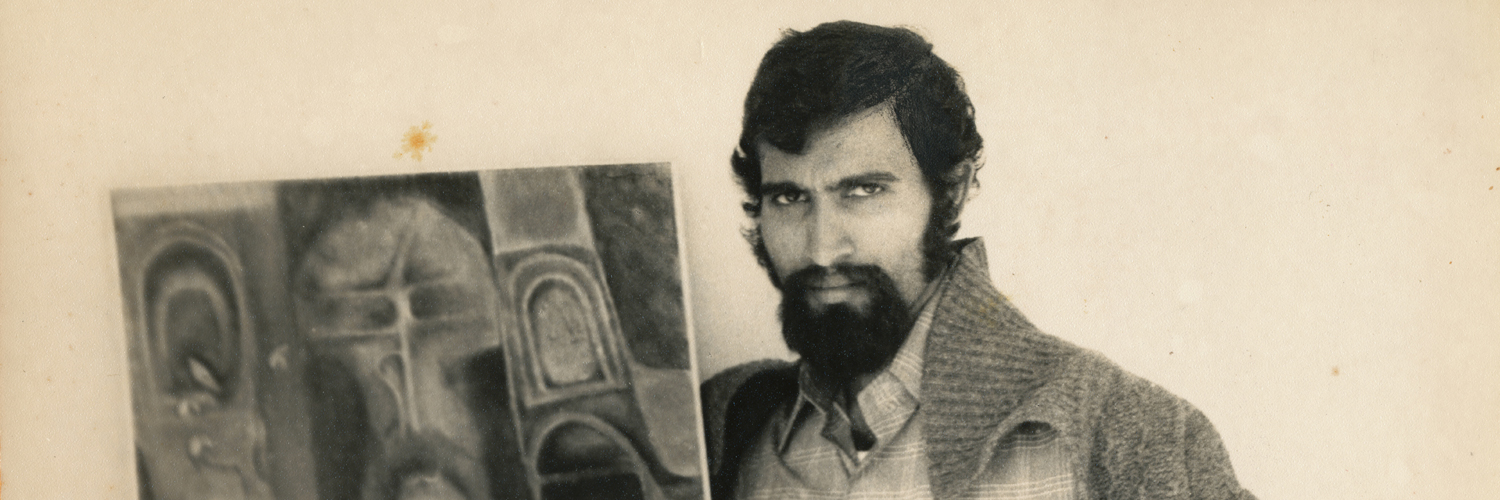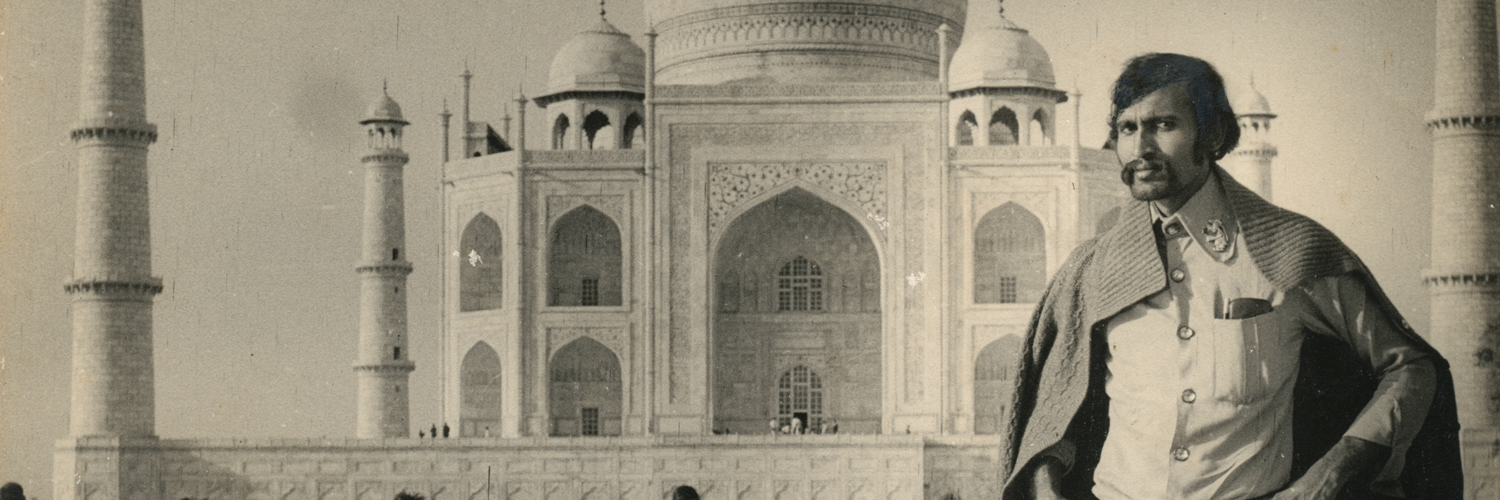Syed Thajudeen Shaik Abu Talib was born in 1943 and spent his formative years as a student in Penang, Malaysia. He pursued his art education at the Government College of Arts and Crafts, Madras, India in 1968 graduating with a post diploma in Fine Arts in 1974.
Without doubt, Syed’s unique style and aesthetic sense draw inspiration from the Bauhaus art of Paul Klee and his Indian education background fused with Malay cultural elements.
A distinctive stylisation, romantic treatment of subject matter and the rich colours as in the Ajanta cave paintings of Maharasthra and of the Mughal (enriched from the wealth of Indian mythology) are apparent in his works. This, together with the traditional visual arts’ integral connection with literature, music, dance, sculpture and philosophy, helped shape Syed’s early works. His works, as individualistic as they are, attempt to evoke a state of rasa, or heightened mood that belongs to a larger tapestry and sensibility of Asian artistic traditions. In many instances where his favourite subject matters deal with women and love, they share the same archetypal symbols and metaphors.
Syed’s impressionable days spent at the Madras College of Arts and Crafts had a profound influence on his search for artistic style and identity. Baroda, Calcutta and Madras were at the time rife with new ideas, experimentations and soul-searching discussions by the pioneering figures of India’s post-independence visual artists. These artists were struggling to establish their individualistic styles. At the same time, they felt compelled to learn from the larger vehicle of Indian traditional arts that ubiquitously permeate the life of the masses in India. A larger number of these early figurative contemporary painters of India, found the rich tapestry of the Indian tradition, a source of inspiration as well as a point of embarkation for their own contemporary approach. These pioneering protagonists of India’s visual arts had a deep impact on Syed Thajudeen’s early paintings.
On returning to Malaysia, however, Syed soon established his own individualistic style and expression that transformed the early Indian influences into what is now his present style, an amalgamation of cultural elements and metaphors. During the initial stages of Syed’s career, Malaysian art was rampant with grandiose ‘manifestos’ and dogmas, which were critical of his work. This period in the 1970s coincided with the rise of Islamic fundamentalism. This movement had a profound influence on the direction of Islamic painters favouring abstract paintings, with those who still chose to paint the human figures finding themselves scorned upon.
In the course of five decades of prolific and creative output in Malaysia, Syed has managed to convince his detractors – who had initially criticised him for his works which had deeply ingrained Asian influences and had overt decorativeness – his works are now an important element of Malaysian art and its history. Syed Thajudeen’s Kebaya and Waiting for the Lover series are his widely popular works emoting the joys of love and femininity in its truest form and beauty. Syed Thajudeen successfully evokes the spirit of patriotism through his Merdeka series, where the Jalur Gemilang and the image of the Tunku proclaiming Malaya’s independence is vividly expressed. His niche, however, lies in his passion and fervour in producing fine art in grand scales. Syed literally takes years to produce the mural sized paintings down to its minute detail. Ramayana, the first of his mural sized painting (72 x 453 cm), was painted in 1972 when he was still a student. Epic tales such as the founding of Malacca by Parameswara and his travels, have been captured in canvas by the artist in epic proportions. His current work which is part of the Malacca Sultanate series, The Eternal Love between Hang Tuah and Puteri Gunung Ledang, measures 183 x 762 cm. This masterpiece took Syed Thajudeen three years to complete.
Today, Syed’s works are accepted by the mainstream Malaysian art circles and have become part of the rich Malaysian contemporary art heritage. Syed Thajudeen has exhibited extensively around the world, including the USA, Belgium, UK, and China with 9 solo exhibitions under his belt to date. His works decorate the walls of the National Art Gallery of Malaysia, Singapore Art Museum, Beijing Olympic Museum, corporate buildings and many private homes in Malaysia and abroad. Syed Thajudeen has truly established his niche as one of Malaysia’s distinguished figurative painters with a unique lyrical and poetic style.




